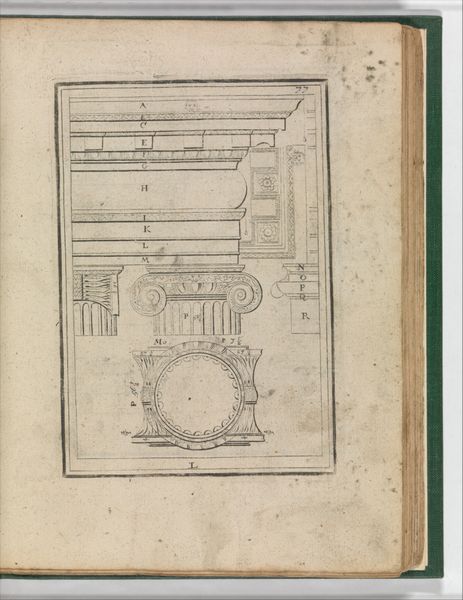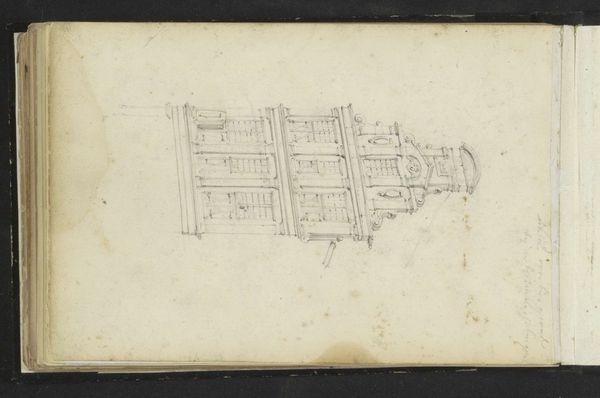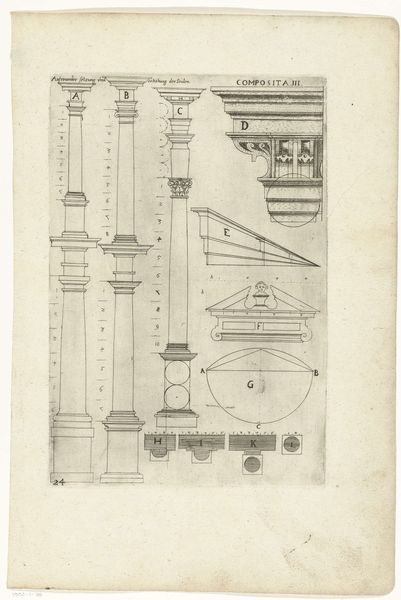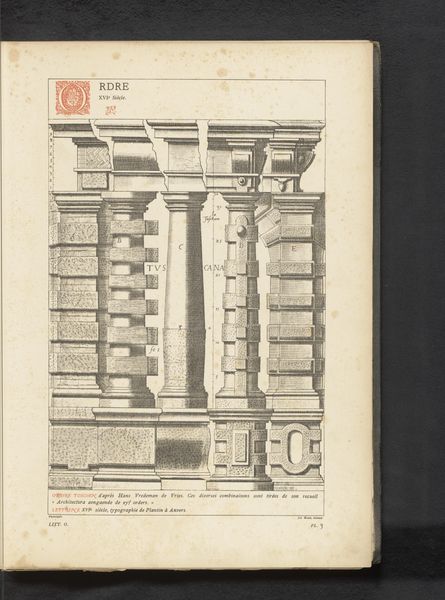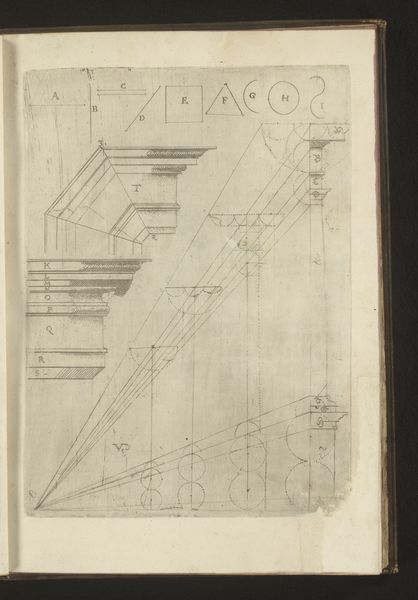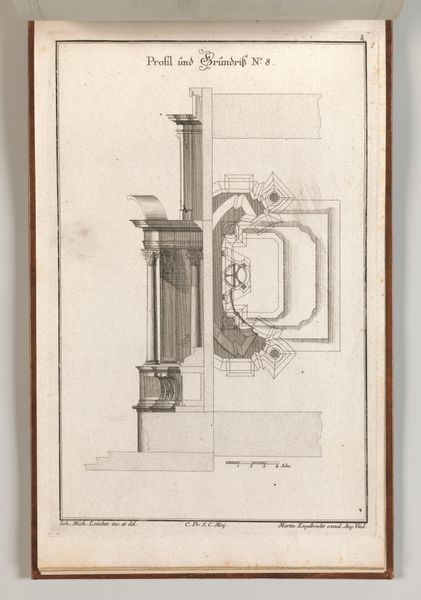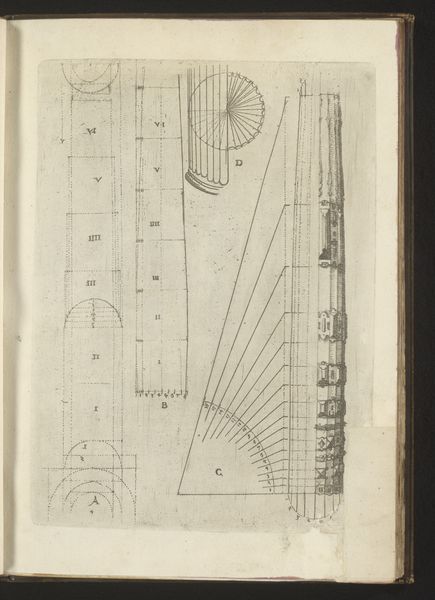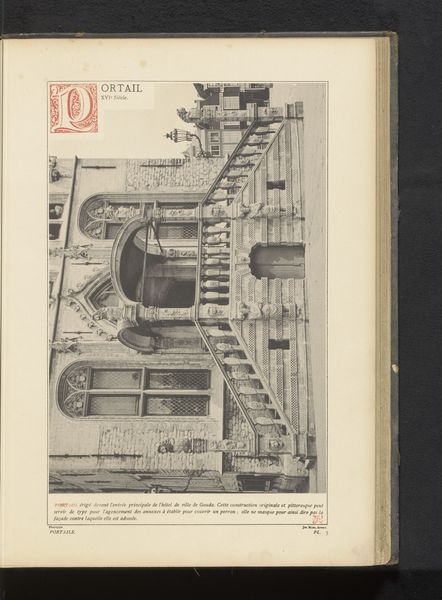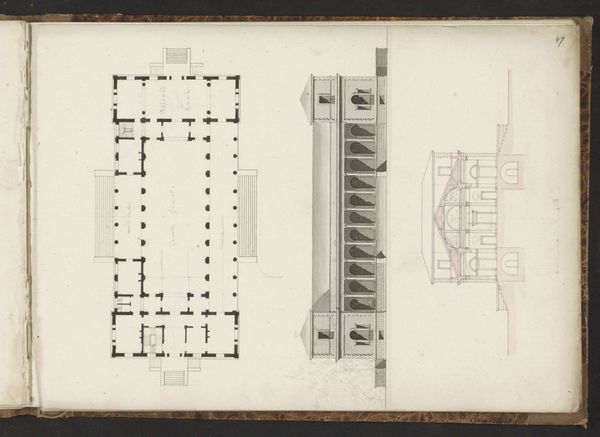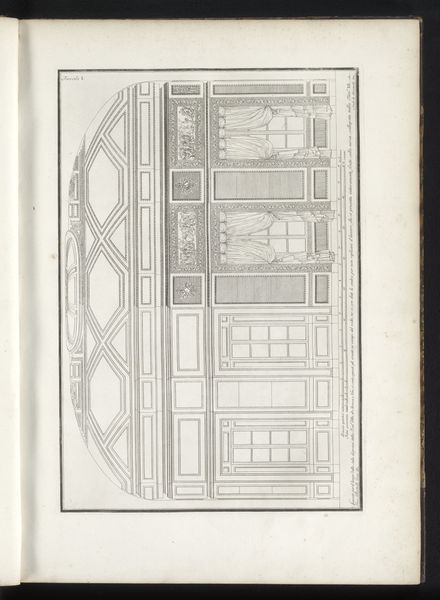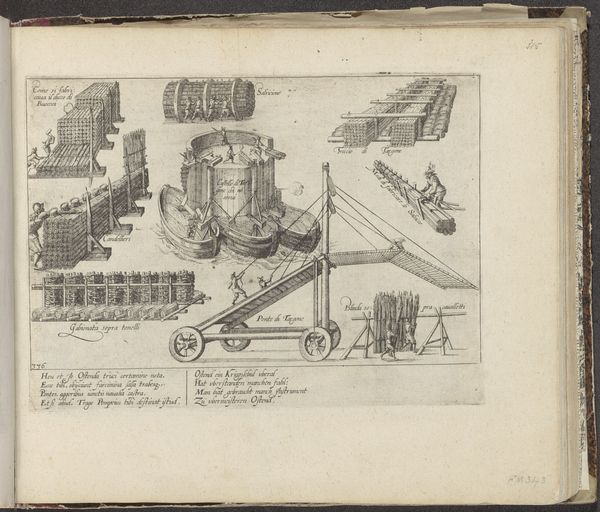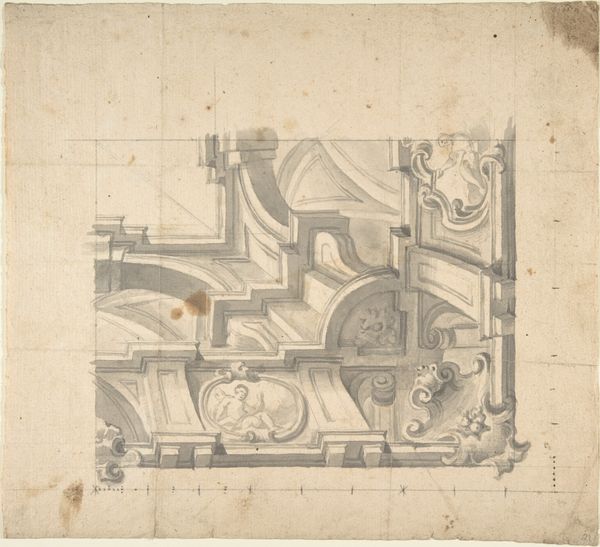
Verhoudingen van een hoofdgestel uit de Toscaanse orde en een detail van een hoofdgestel 1593 - 1595
0:00
0:00
drawing, paper, pen, architecture
#
drawing
#
aged paper
#
toned paper
#
homemade paper
#
sketch book
#
paper
#
form
#
11_renaissance
#
personal sketchbook
#
geometric
#
column
#
pen-ink sketch
#
pen and pencil
#
line
#
pen work
#
sketchbook drawing
#
pen
#
italian-renaissance
#
sketchbook art
#
architecture
Dimensions: height 250 mm, width 181 mm
Copyright: Rijks Museum: Open Domain
Wendel Dietterlin created this print of a Tuscan capital sometime in the late 16th century using an intaglio process. This involved engraving lines into a metal plate, likely copper, then inking the surface and wiping it clean, leaving ink only in the recessed lines. The plate would then be pressed onto paper, transferring the image. The material qualities are evident in the precision of the lines, the way the ink sits on the page, and the contrast between the dark lines and the light paper. The careful process of engraving, requiring skill and patience, reflects the Renaissance emphasis on craftsmanship. The print itself suggests a method of production – an architectural blueprint for classically designed columns. In Dietterlin’s time, prints like this were crucial for disseminating architectural knowledge. They allowed builders and designers to study classical forms and proportions, adapting them for contemporary buildings. Consider the labor involved, from the engraver to the printer, and the role of these images in shaping the built environment. This print exemplifies how material, process, and social context intertwine to give meaning to a work of art.
Comments
No comments
Be the first to comment and join the conversation on the ultimate creative platform.
